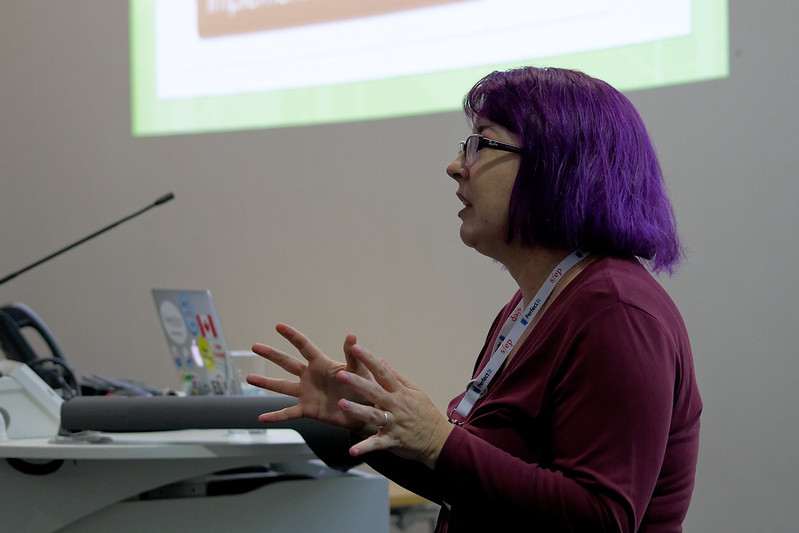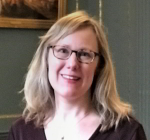This year’s CIEP conference was held online, from 2 to 4 November. Attendees from all over the world logged on to learn and socialise with their fellow editors and proofreaders, and a number of delegates kindly volunteered to write up the sessions for us. Emily Gleeson reviewed Digital marketing primer: making a big splash on your own, presented by Erin Brenner.
In a year of firsts for everyone, the CIEP 2020 conference brought many for me – my first online conference, my first CIEP event and, more pressingly, my first time nervously writing something real that people might read. My nerves may have been wasted, though, as the more sessions I attended, the more I felt I’d found a place where I could just … be.
Stage fright is my most loyal companion and extends to everything that’s visible to the public, which certainly affects my weak digital marketing efforts. So, it was with a sliver of excitement and loads of trepidation that I sat down to watch Erin Brenner (Right Touch Editing) speak, hoping to learn even a little something that might help.
Digital marketing
For many, digital marketing conjures up frightening images of the conceptually impossible, but Erin soothed us quickly. She began by breaking it down into easy-to-stomach pieces. In doing so, she changed my perspective on successful marketing from an insurmountable mountain scaled only by interpersonal geniuses, into relieved acceptance of the clearly doable step-by-step processes defined by her tidy methods. With a heavy emphasis on building strategy, we were introduced to a clear, goal-driven structure that I’m sure will have even the most introverted and uncertain of us seeing small triumphs, if only we put in the effort. In a defining point about audience, Erin tapped into a reminder I expect all of us need to hear occasionally.
The problem we’re solving for our client is not their lack of clean copy.
It’s so easy to get caught up in the achievement that we find in polishing something to almost perfect, that we can forget that our clients come to us to make their product better, not cleaner or well-written. If they understood our profession – our passion, obsession, sometimes pathological need – enough to know that cleaner even exists, much less as a step towards better, they’d probably not look for us at all.
The road to marketing enlightenment
This comment about problem-solving, which took up only a single line in my hurried notes and is something we’re probably all theoretically aware of, carried us easily into the remainder of the session. Empowering and encouraging in her easy, collegial way of sharing, Erin took us on something akin to a journey of marketing enlightenment. She broke down everything – from defining the real problem we’re solving to how to use a strong marketing message and evocative keywords to get that across. So genuinely generous is Erin with her expertise, we were also treated to resources and suggestions to help us successfully develop a schedule and measure the result of our efforts. All we have to do is stick to the plan.
Erin Brenner’s Digital Marketing Primer rather convincingly conveyed this exciting idea that, with a little bit of patience and the creation of fluid, achievable goals, digital marketing success is not out of reach for any of us. In fact, if we can keep the excuses at bay and follow the guidance we’ve been given, we can pursue it with confidence and clarity and strive to make our businesses work better for us.
 Emily Gleeson is a fiction editor based in Australia, who proclaims an eclectic taste and a preference for stirring subtlety, bold truths and vivid imagery, but whose real delight comes from the happiness her clients find in their achievement. Emily can be found at facebook.com/emilygleesoneditorial/, where she patiently awaits news of a CIEP membership upgrade.
Emily Gleeson is a fiction editor based in Australia, who proclaims an eclectic taste and a preference for stirring subtlety, bold truths and vivid imagery, but whose real delight comes from the happiness her clients find in their achievement. Emily can be found at facebook.com/emilygleesoneditorial/, where she patiently awaits news of a CIEP membership upgrade.
Posted by Abi Saffrey, CIEP blog coordinator.
The views expressed here do not necessarily reflect those of the CIEP.





